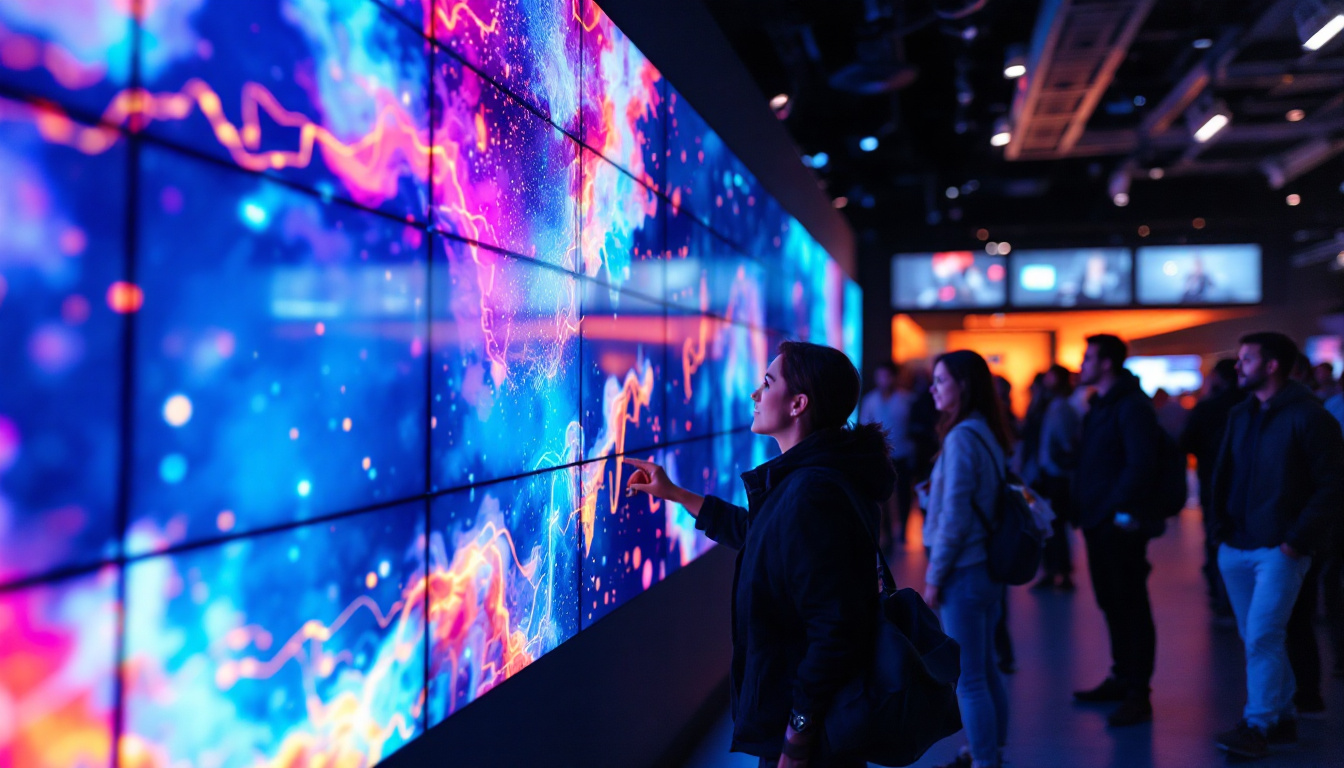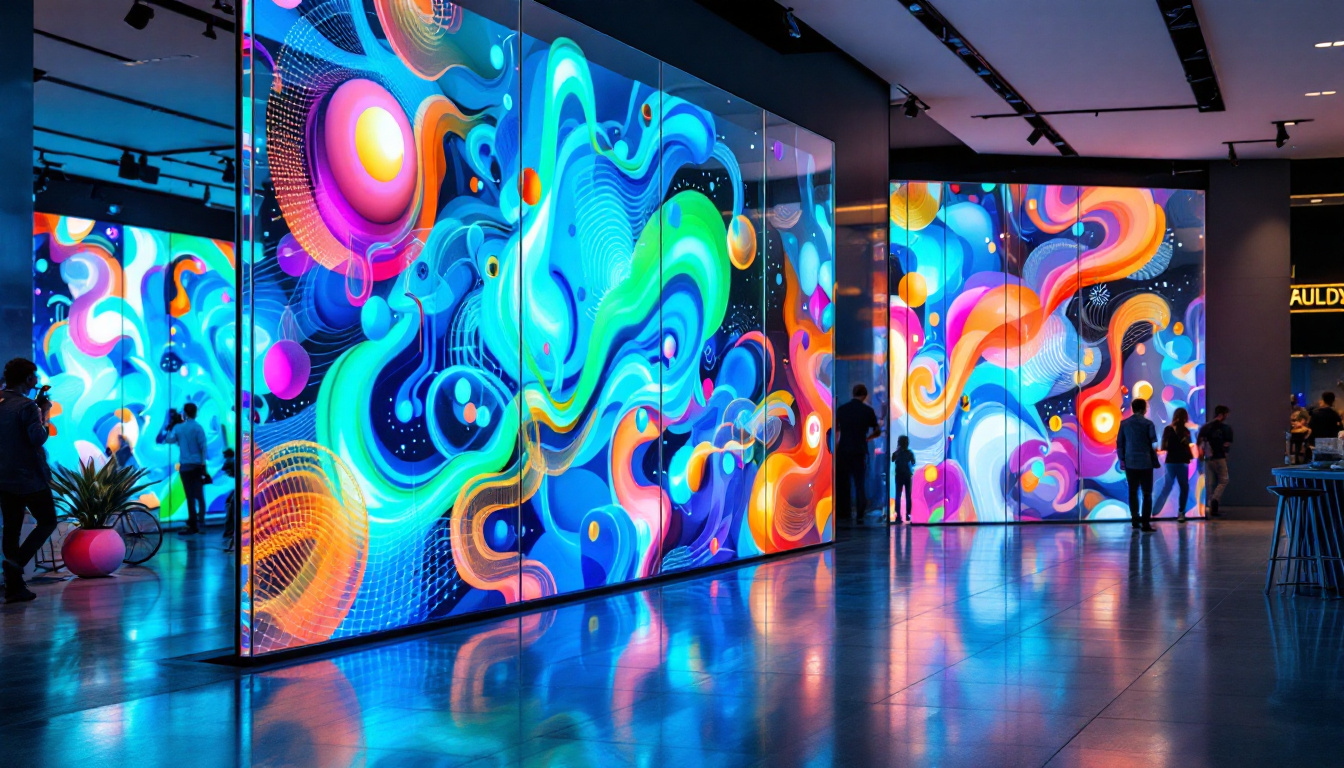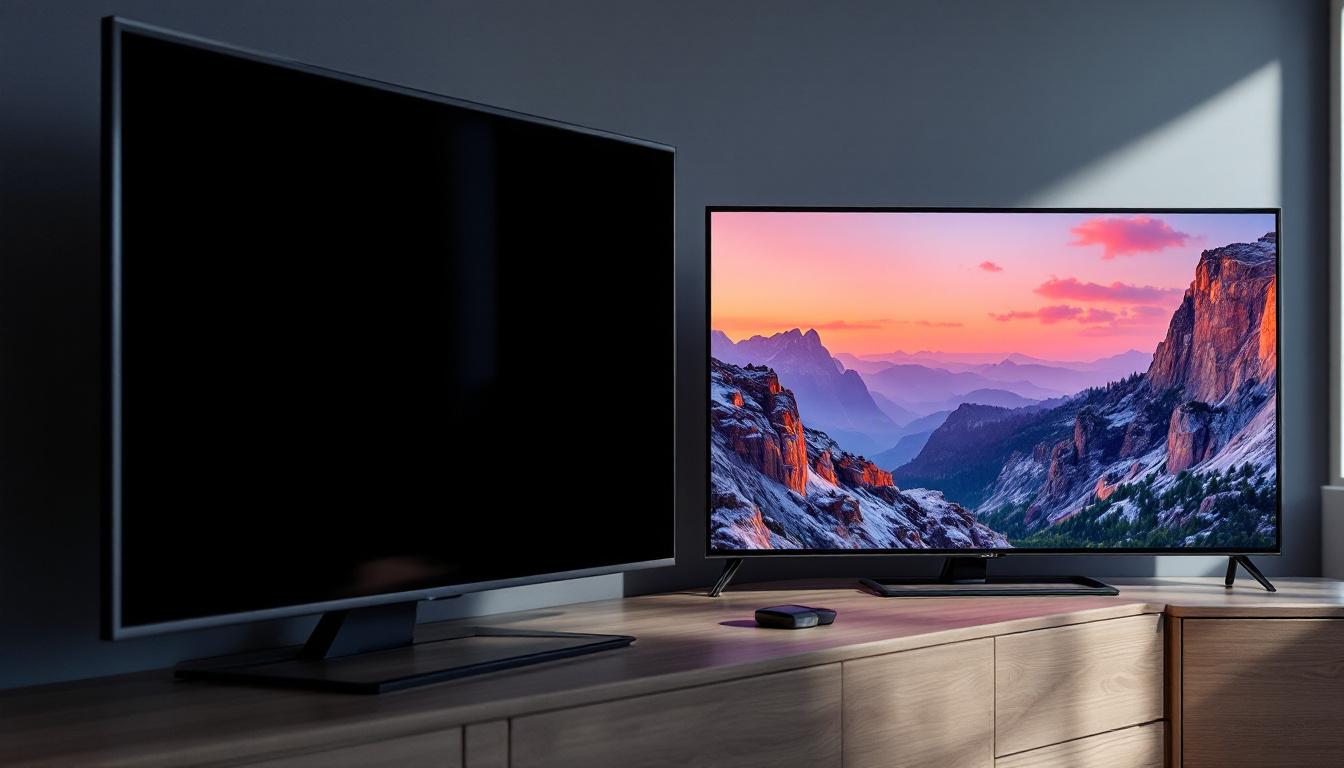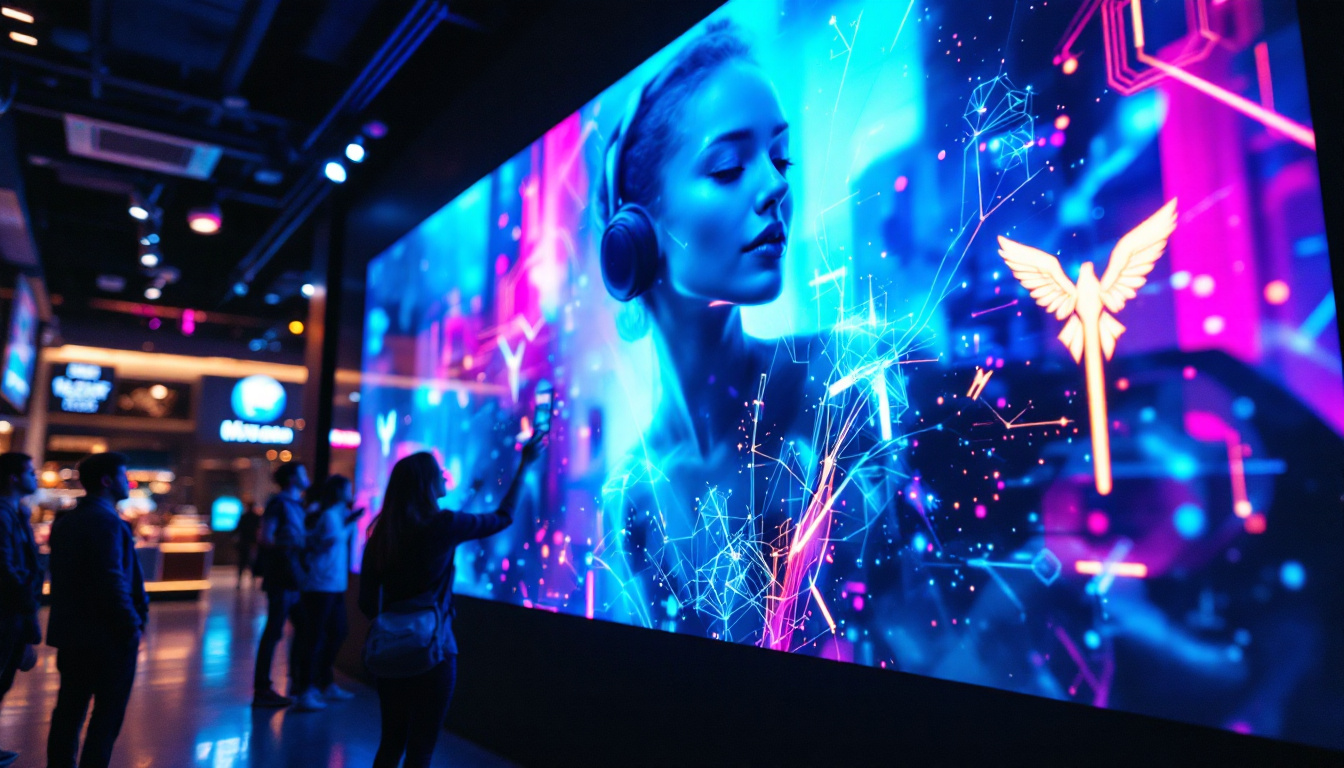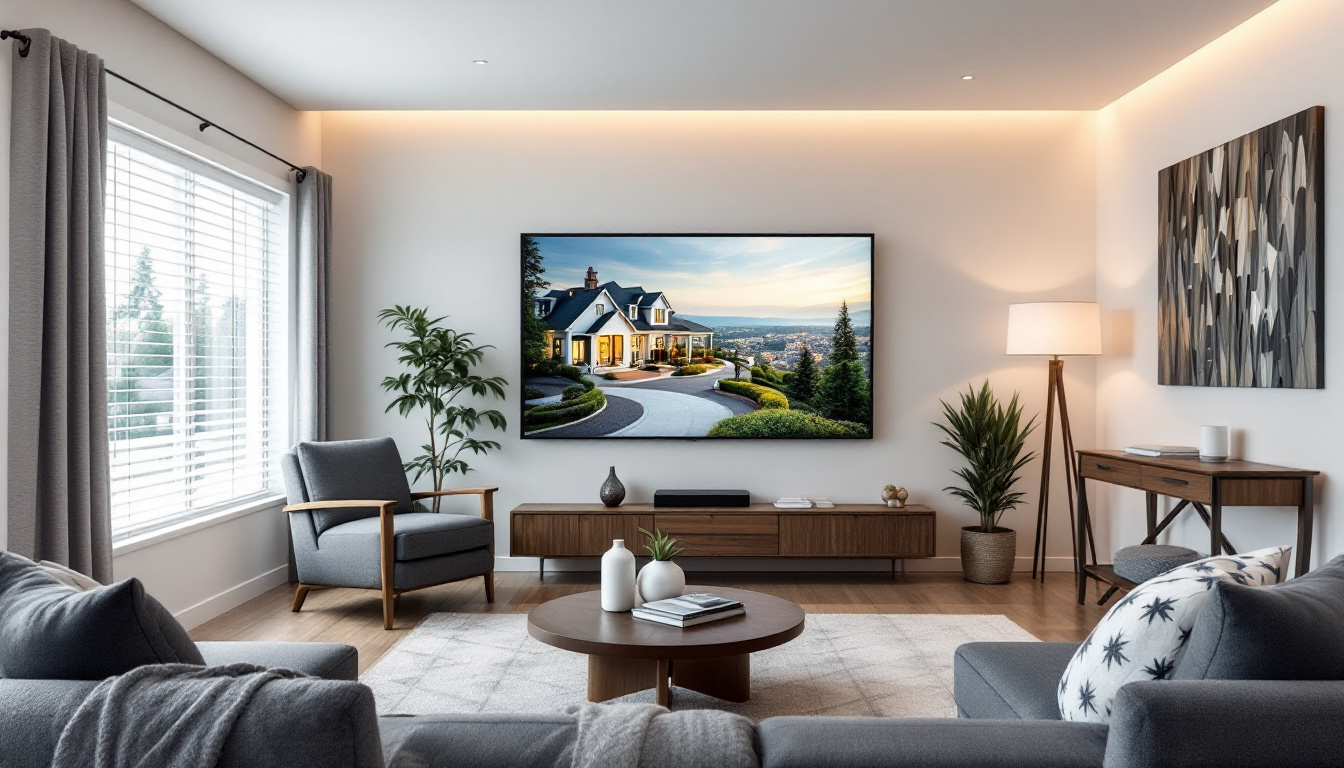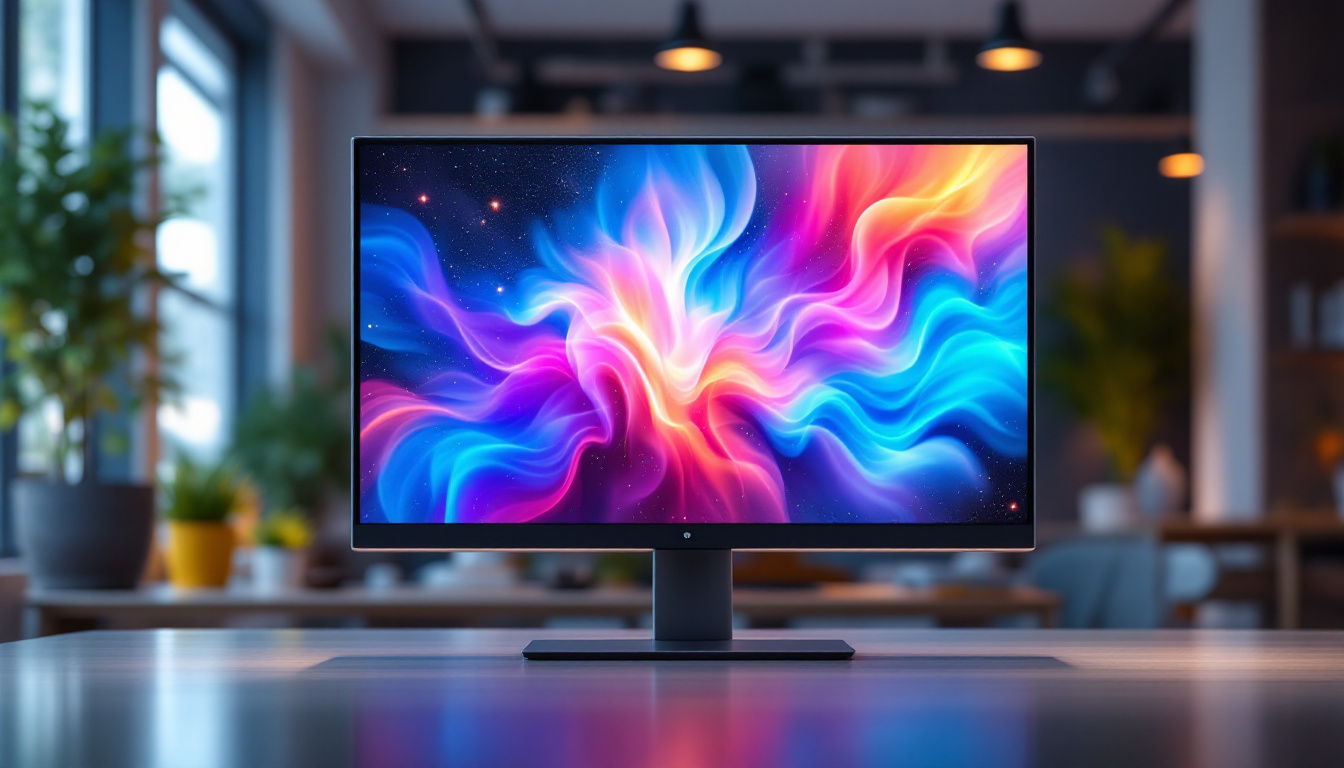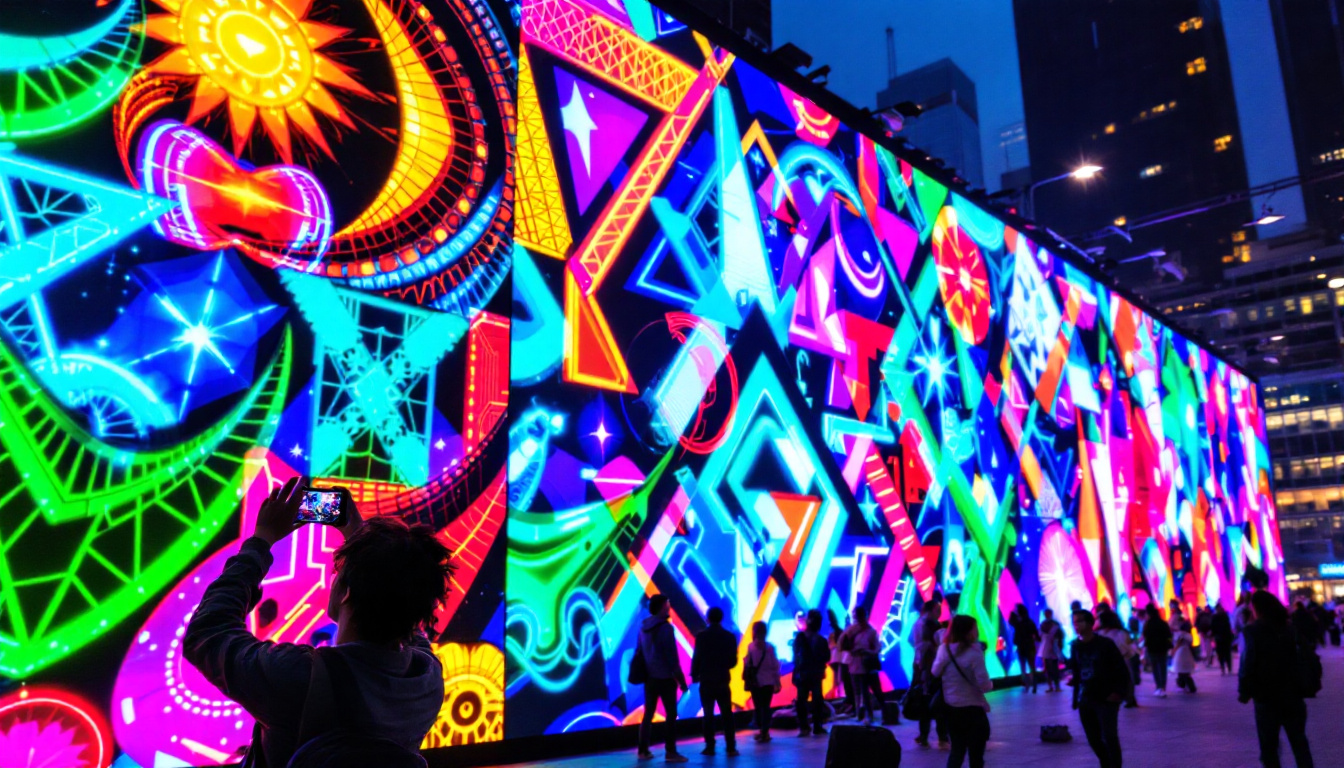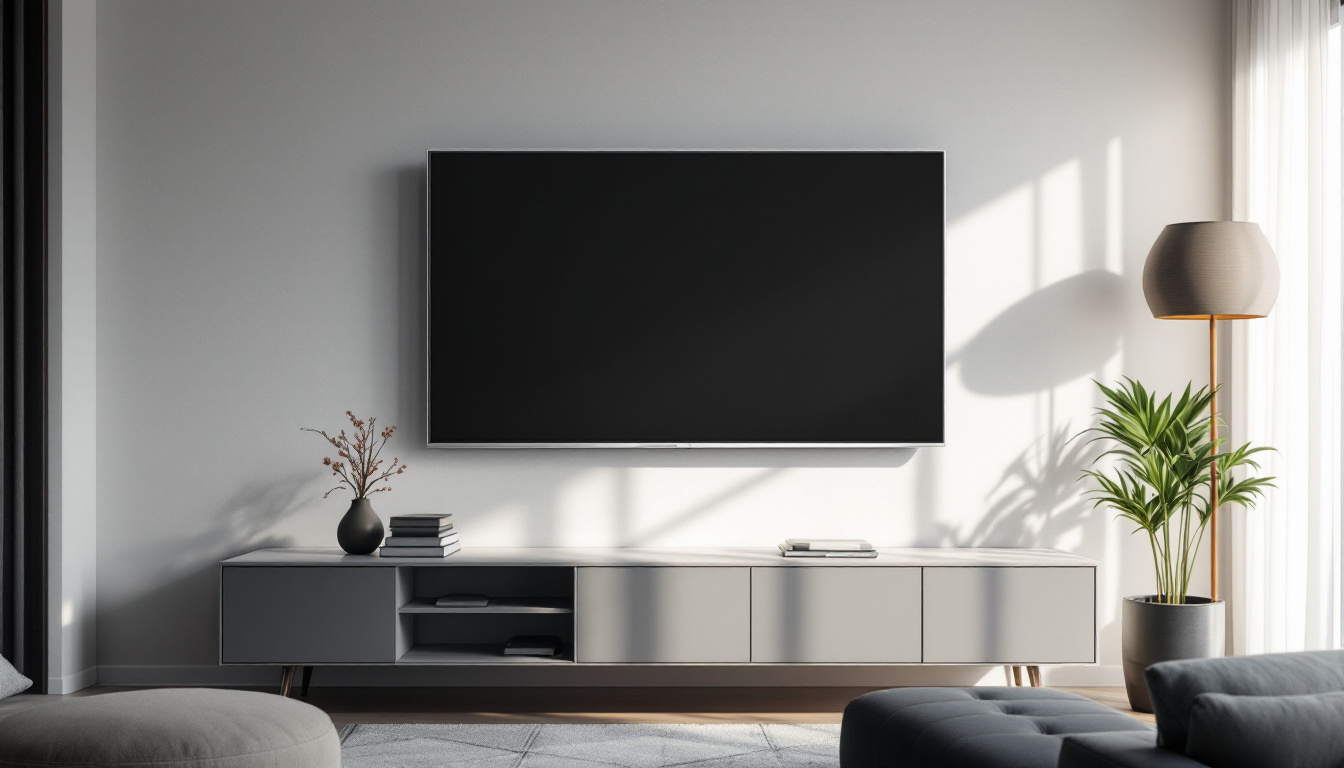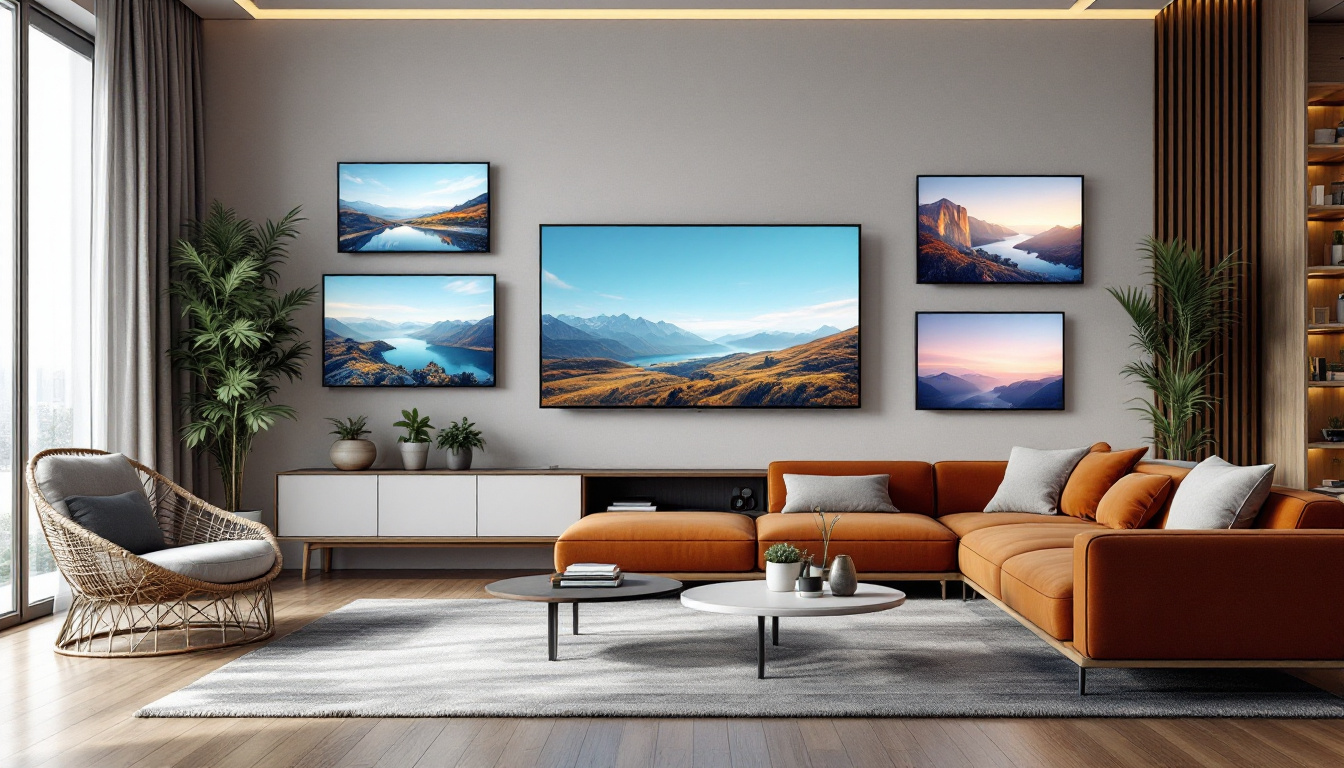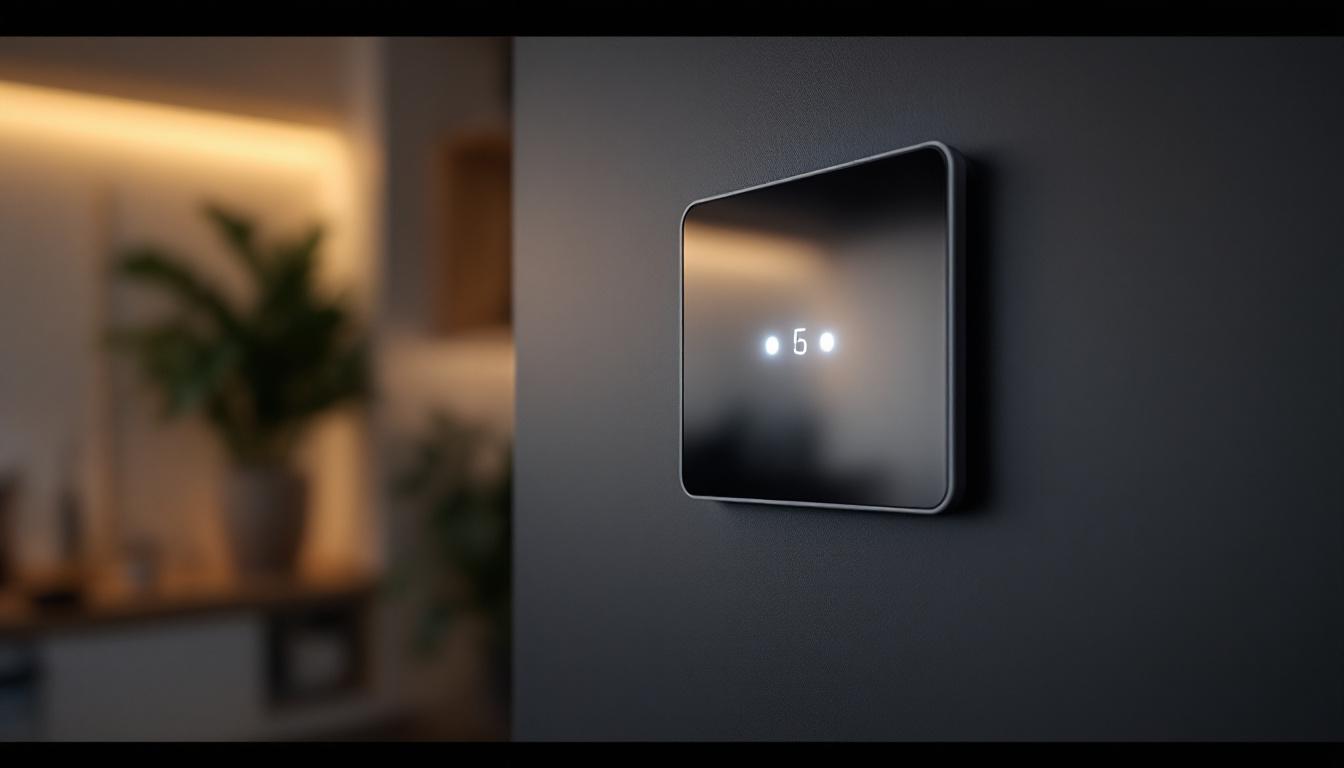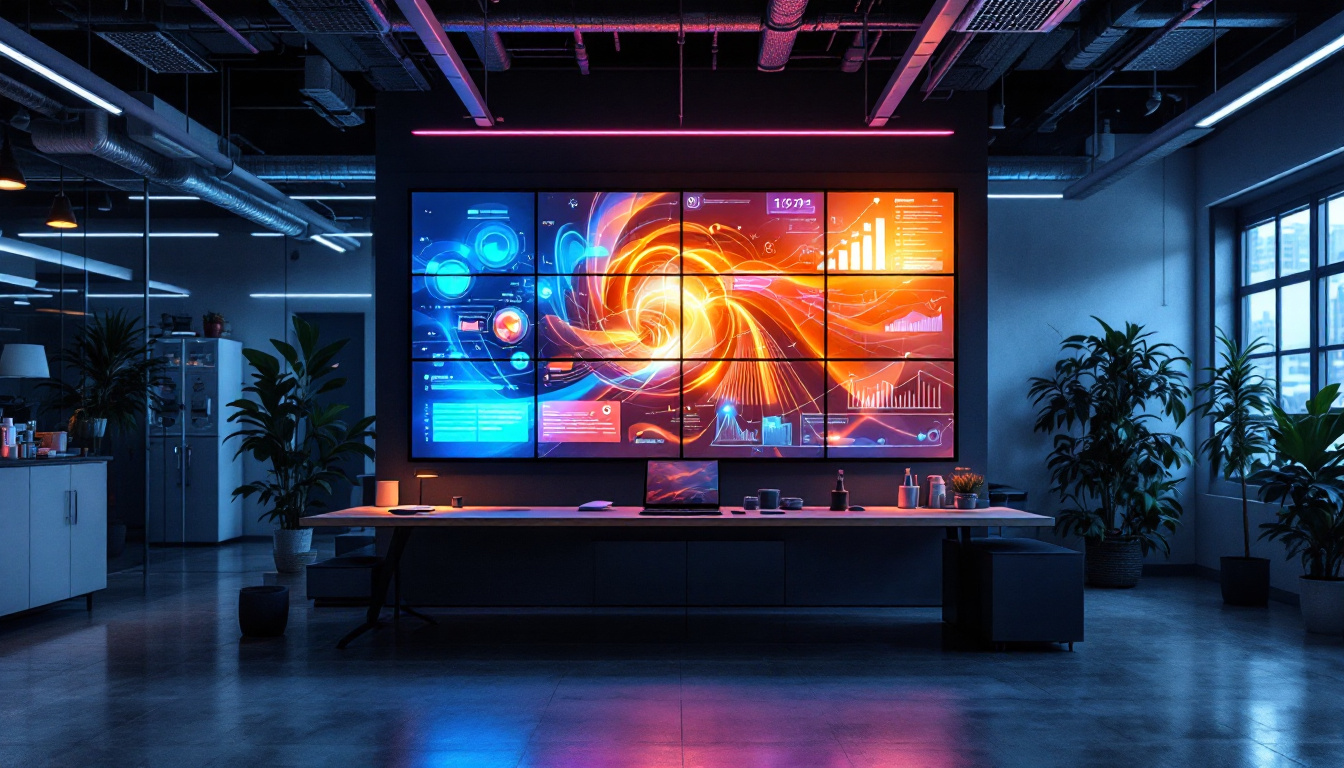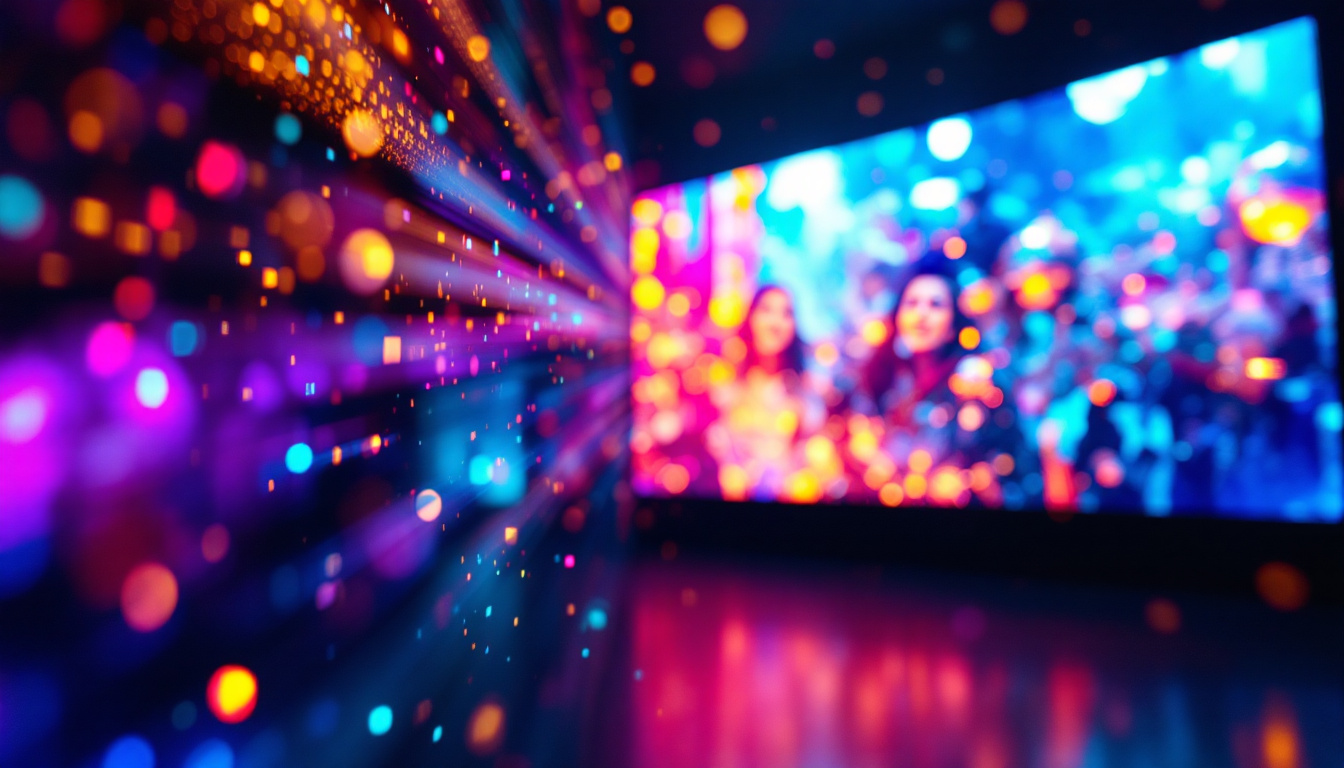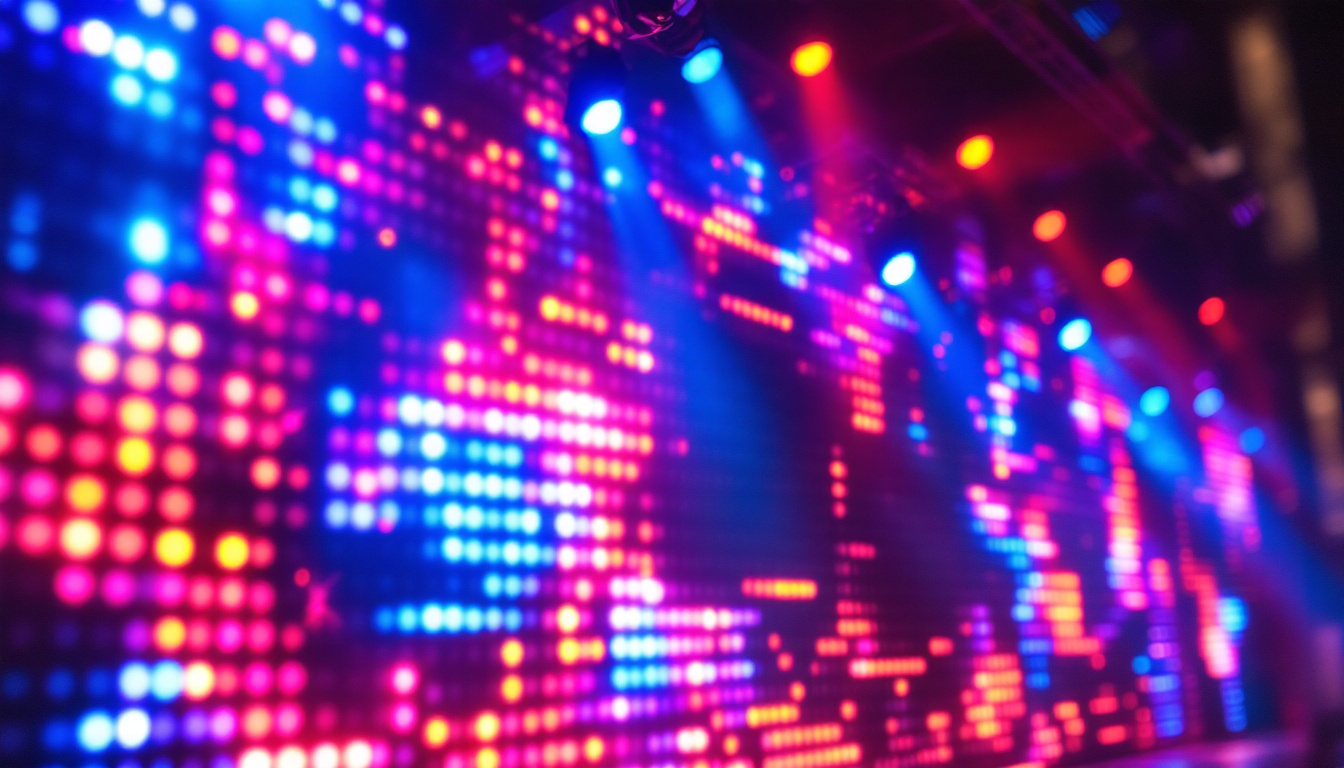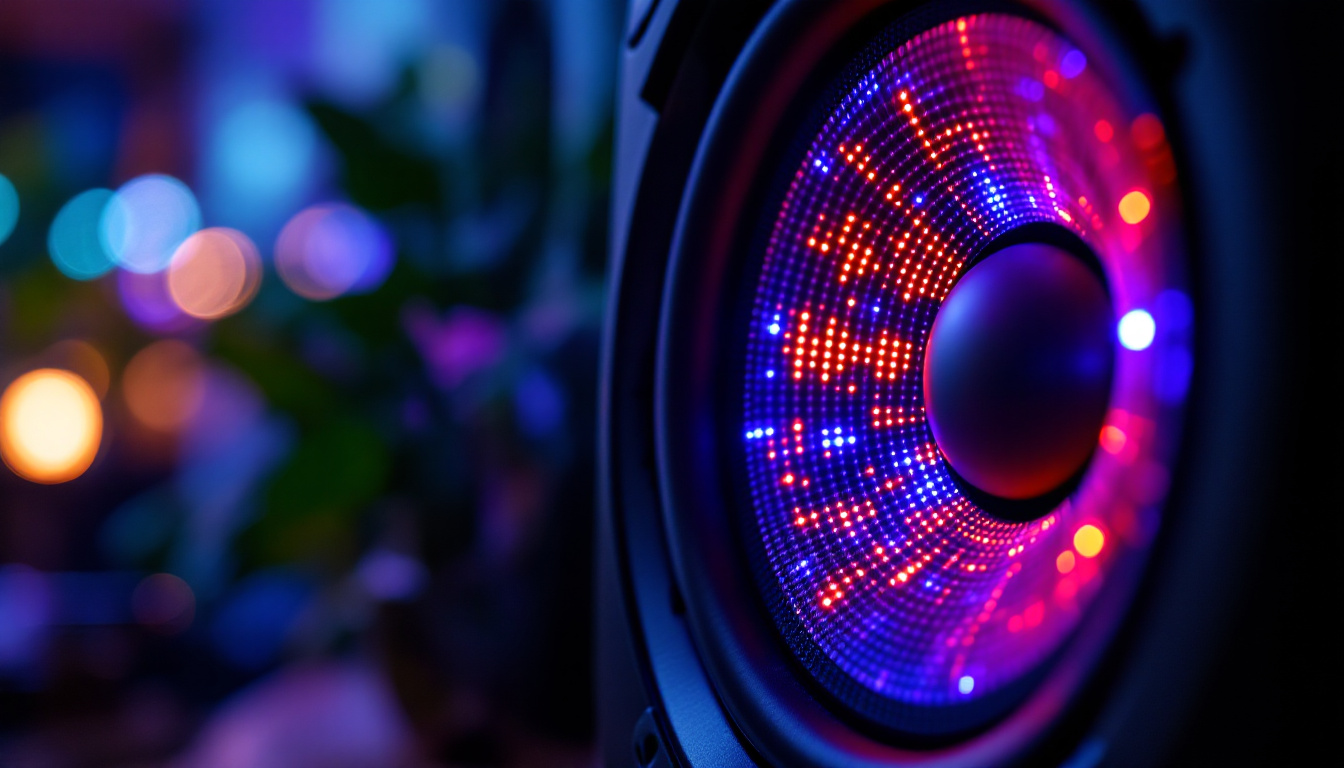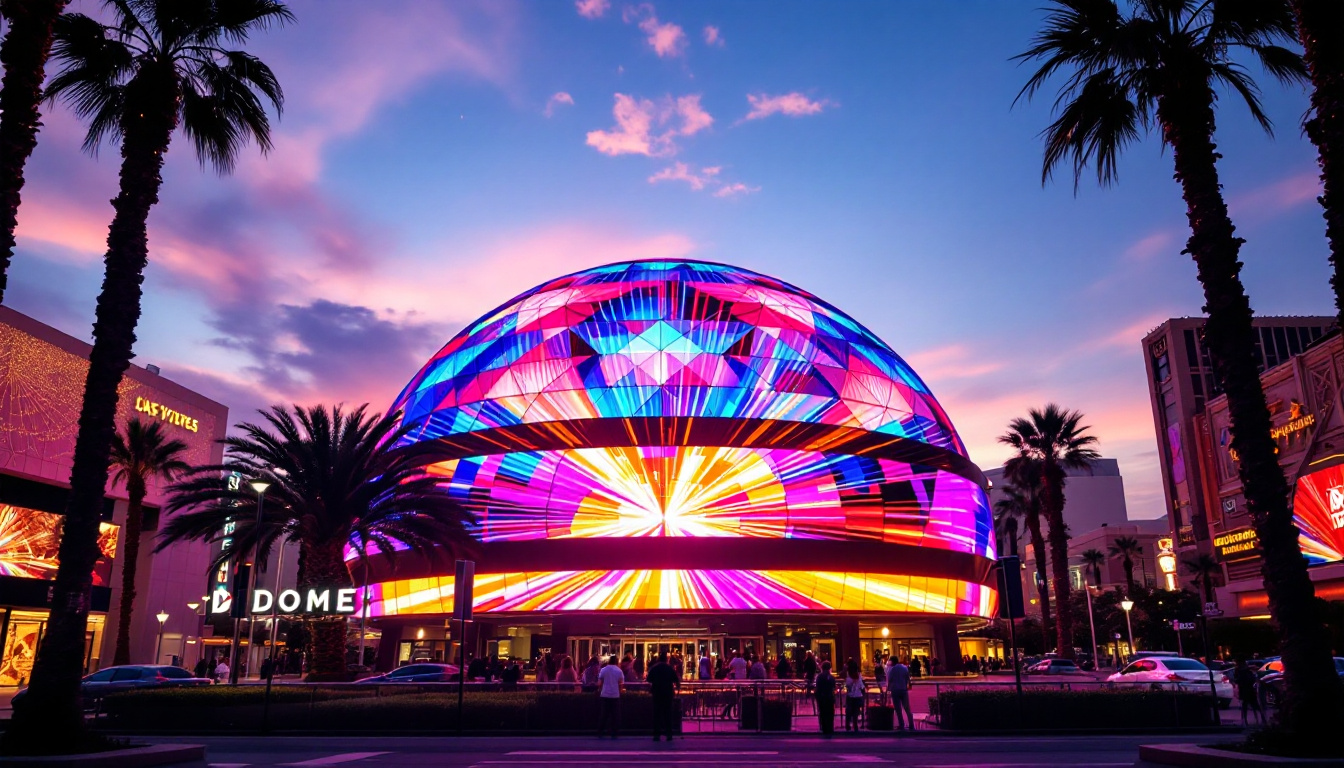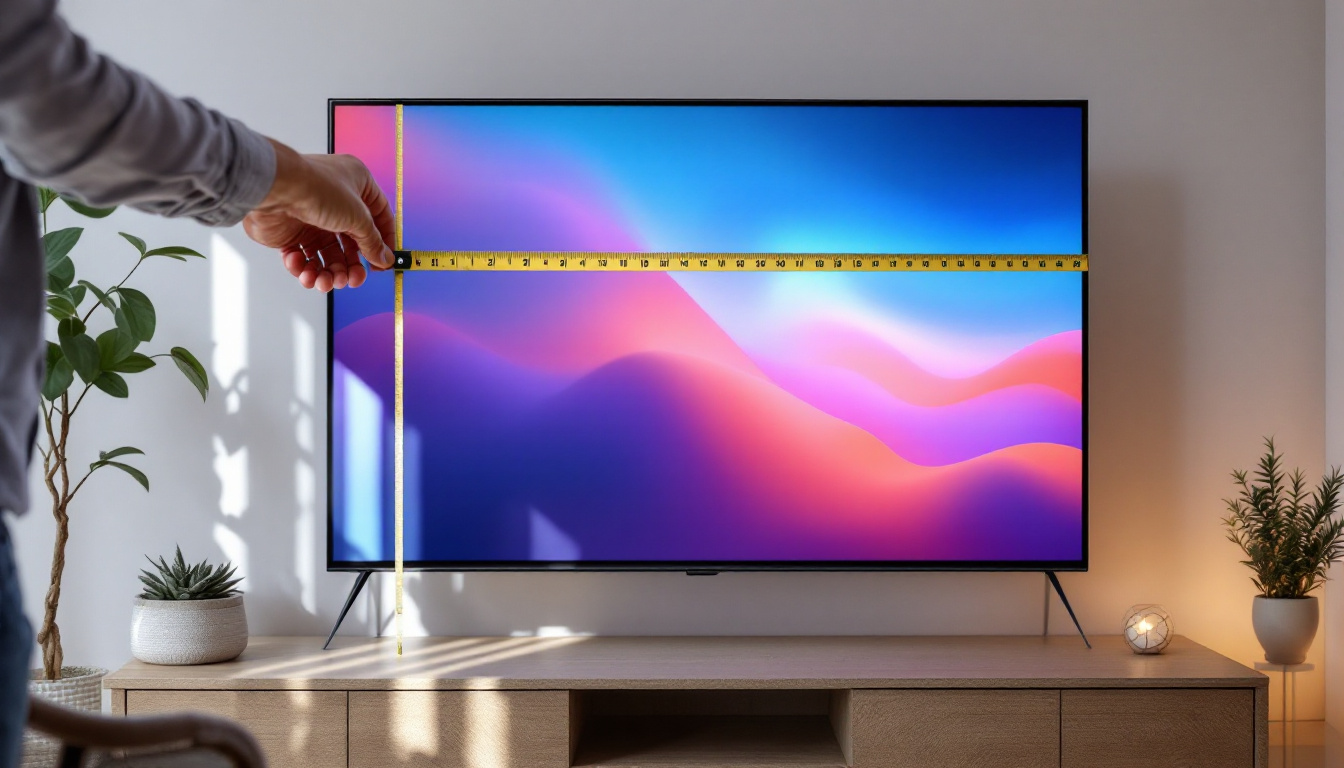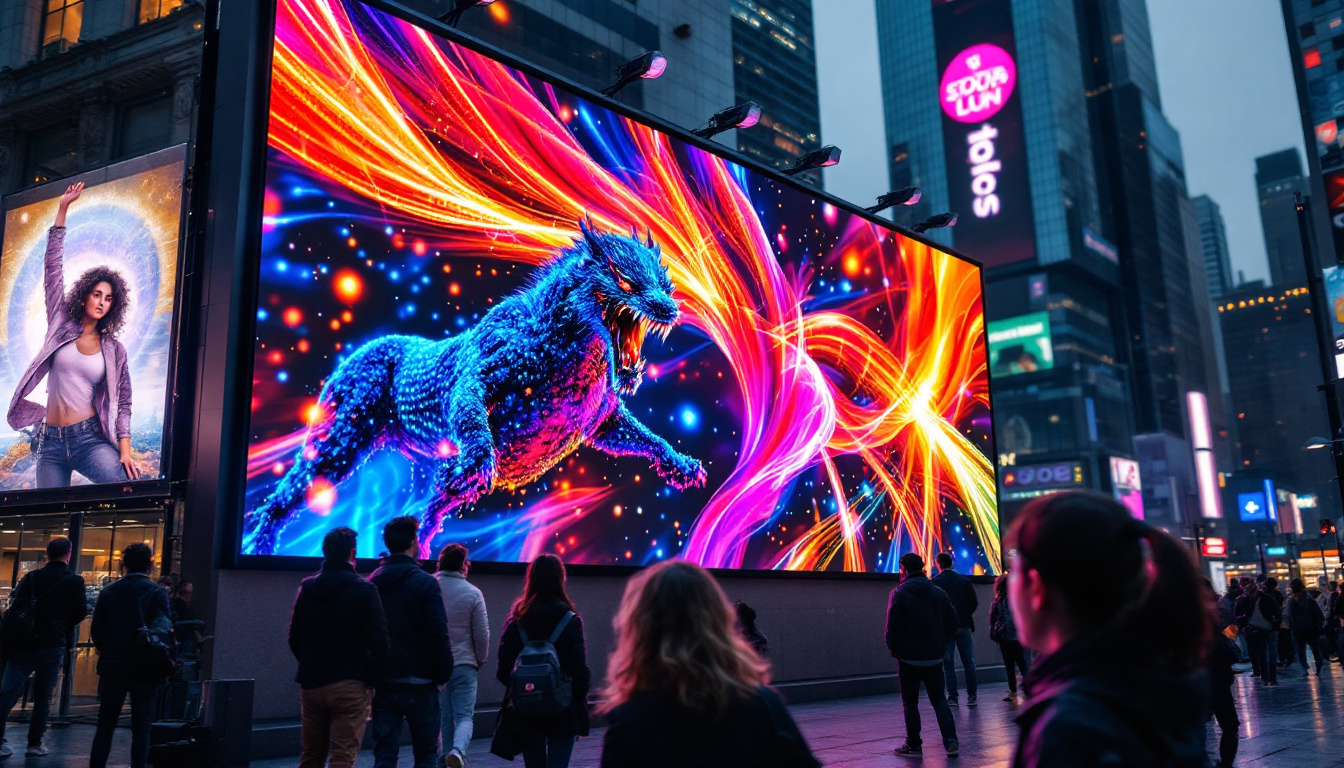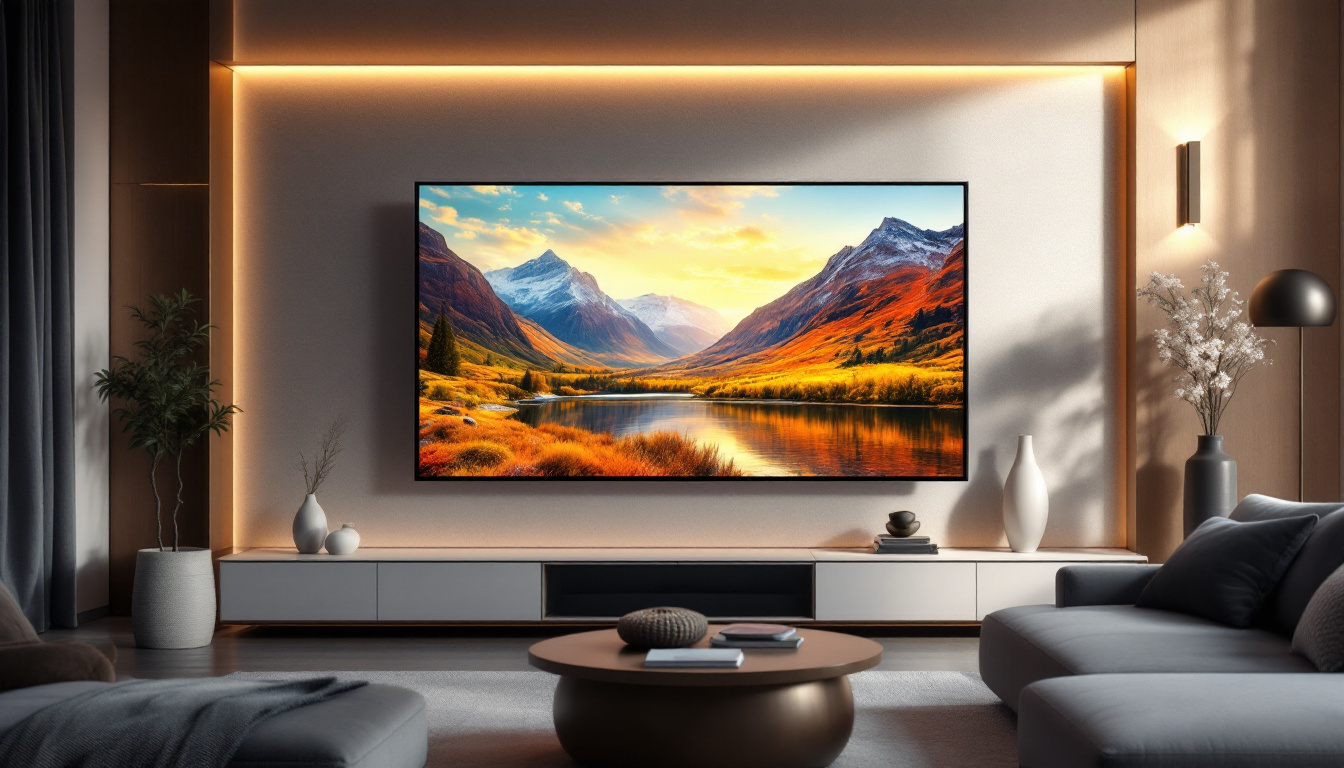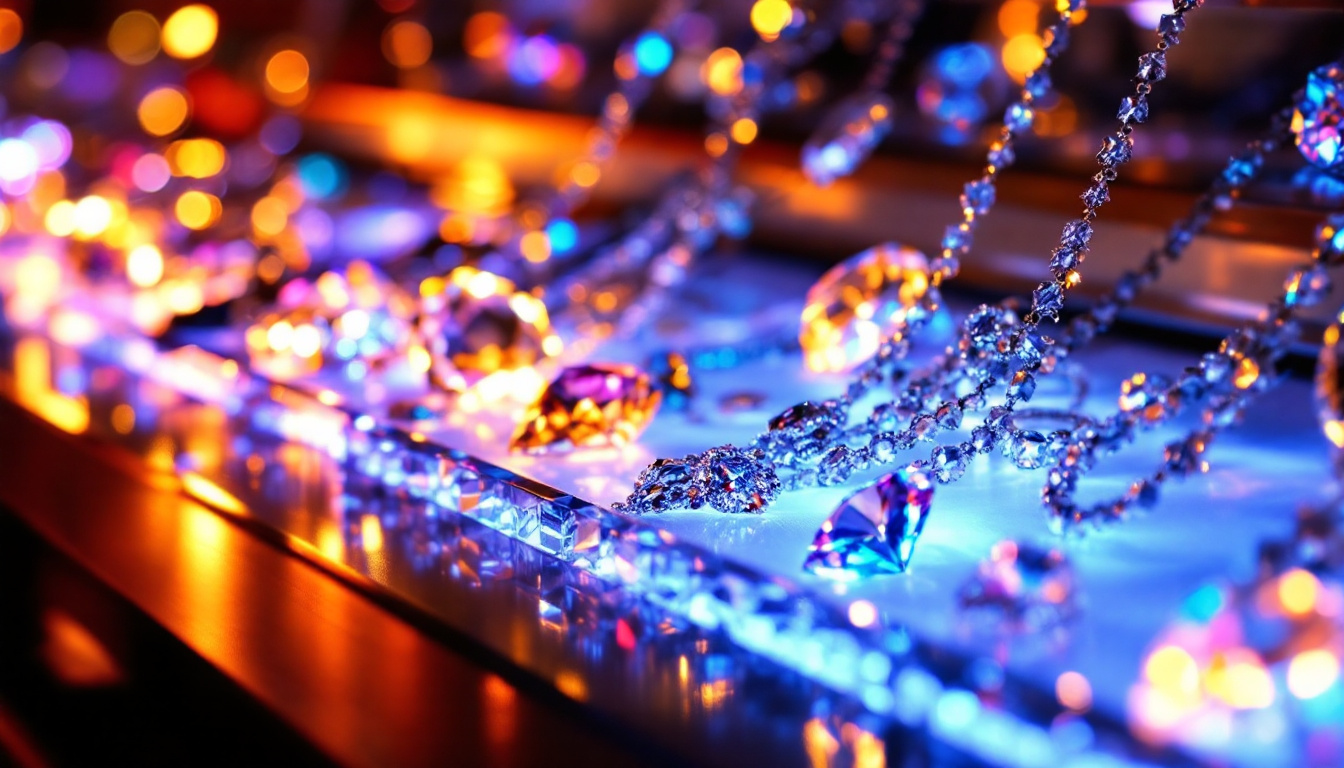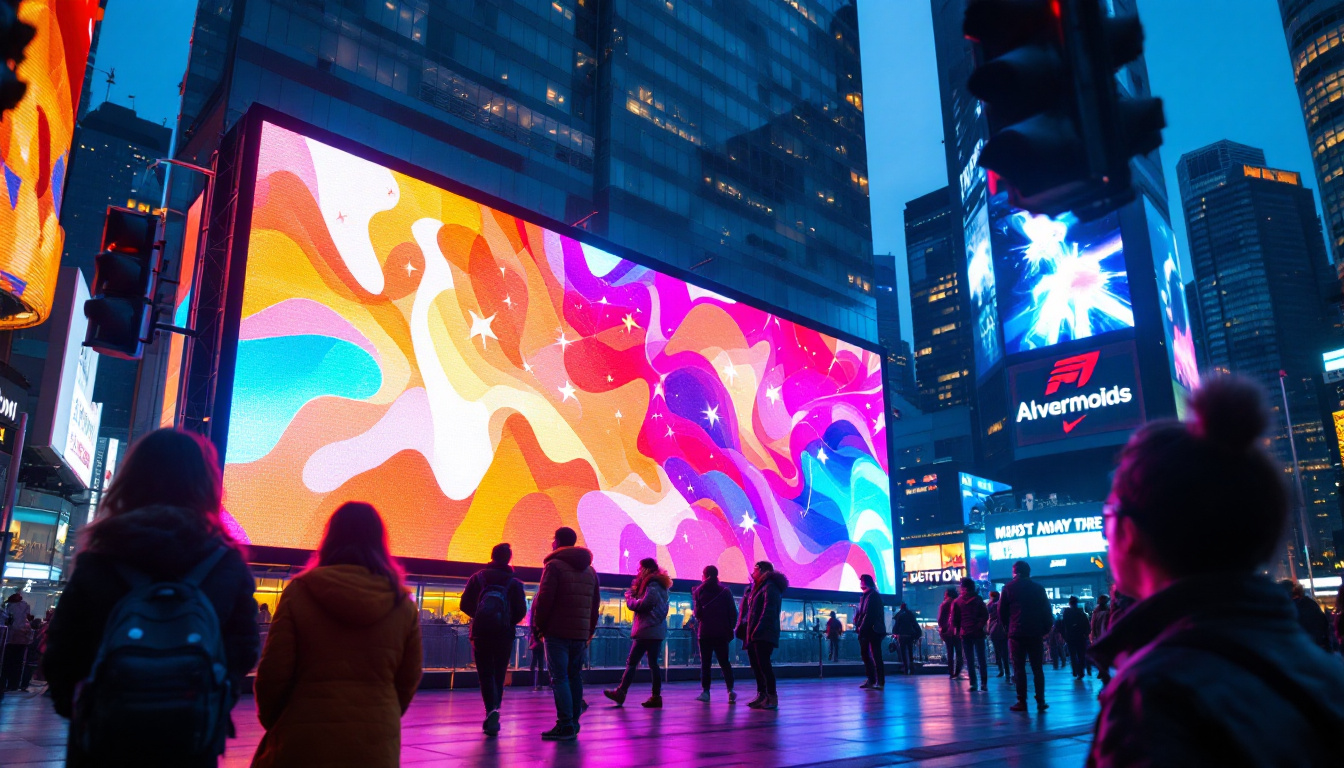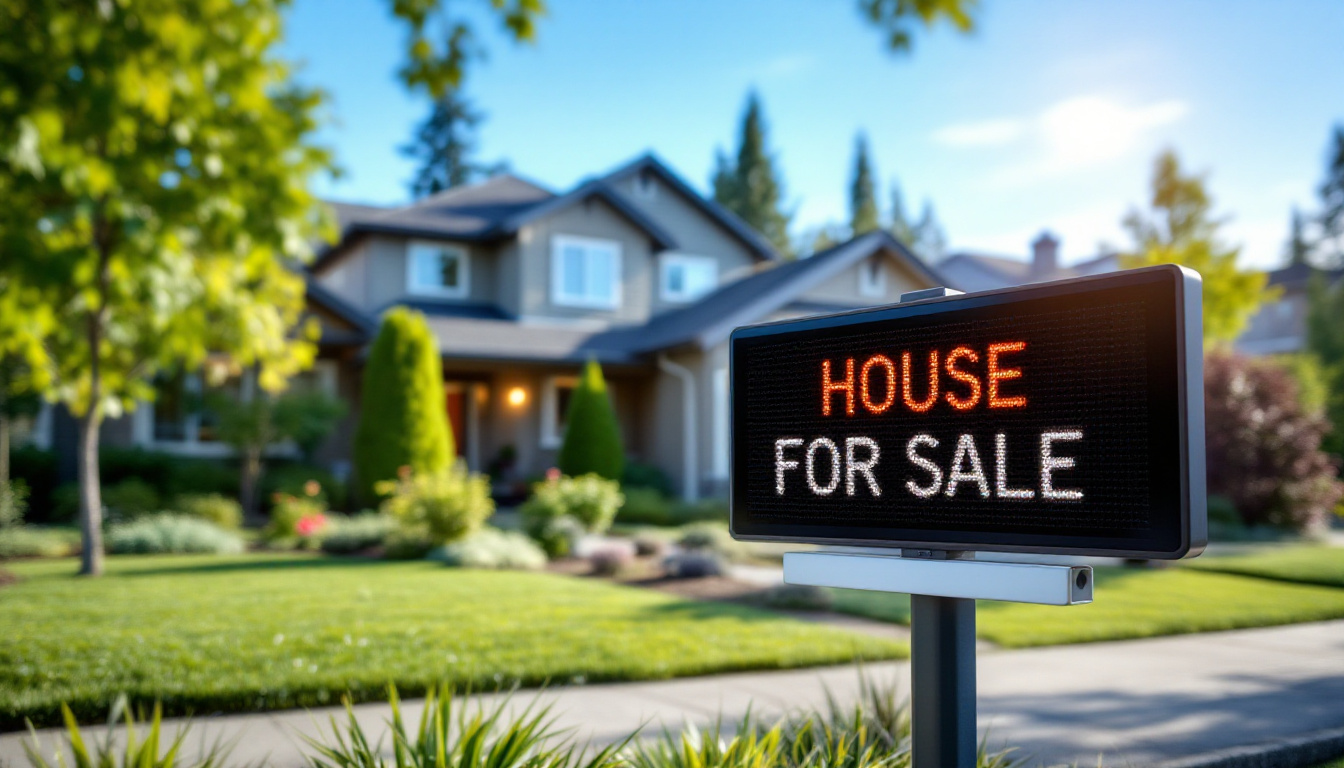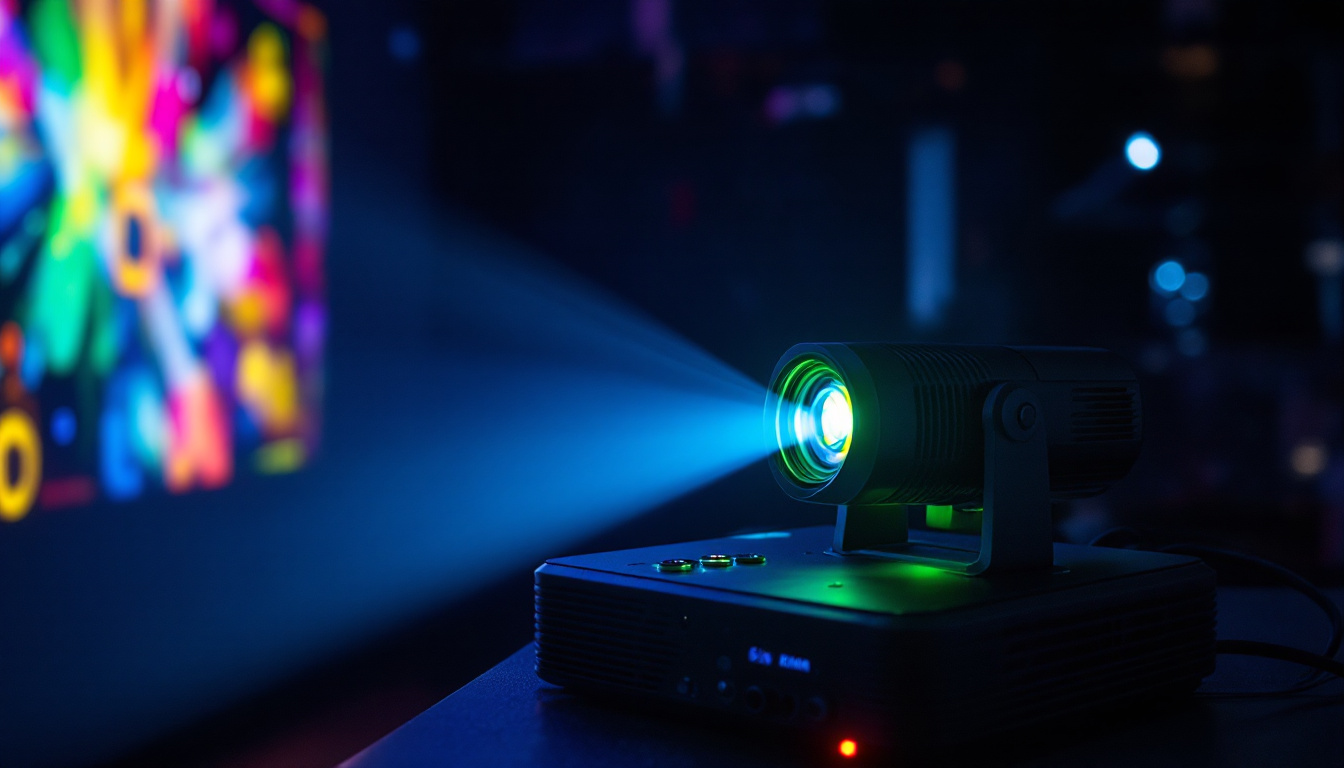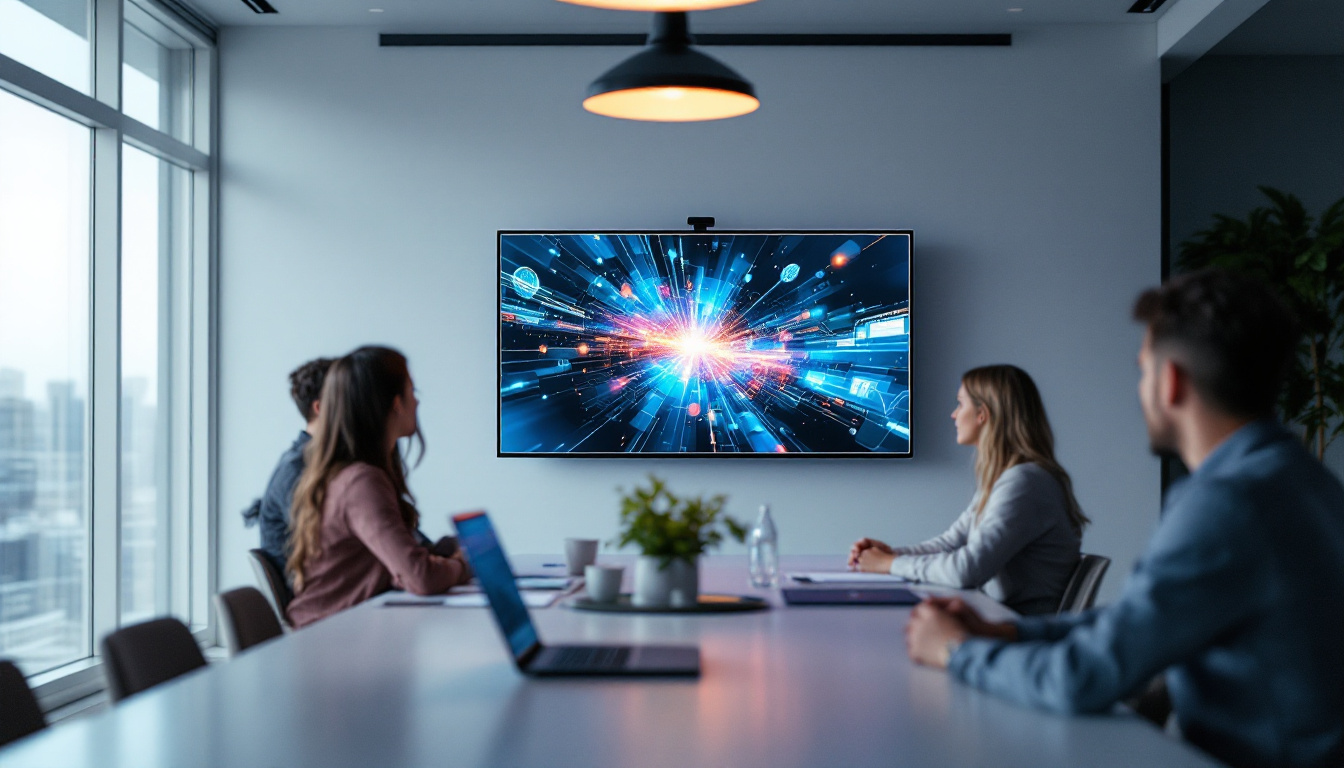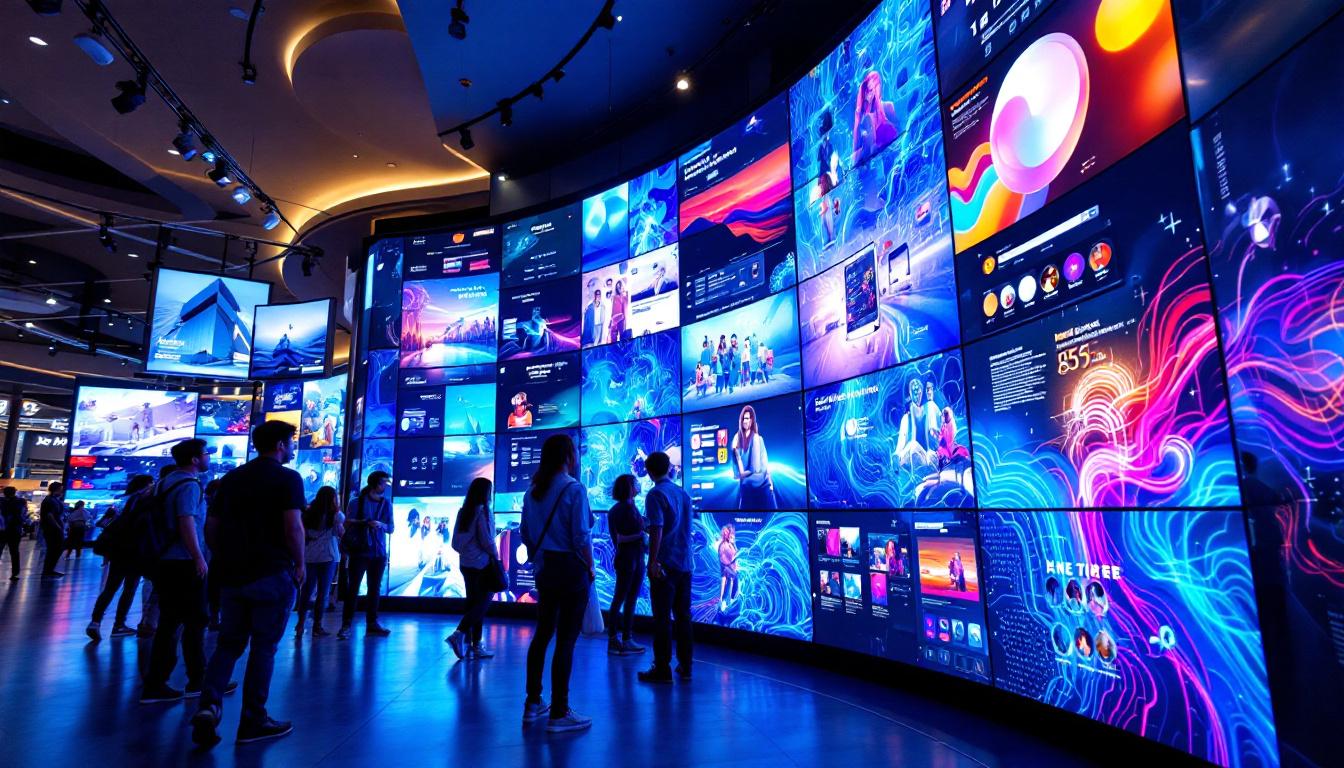In the world of digital signage and display technology, LED displays have emerged as a dominant force. Their vibrant colors, energy efficiency, and versatility make them an ideal choice for various applications, from advertising to entertainment. However, one of the most crucial aspects of LED displays is brightness, which significantly impacts visibility and overall effectiveness. This article delves into the intricacies of LED display brightness, exploring its importance, measurement, and factors that influence it.
Understanding LED Display Brightness
Brightness in LED displays refers to the amount of light emitted by the screen, typically measured in nits (cd/m²). A higher brightness level means a more luminous and vibrant display, which is essential for visibility in different lighting conditions. This section will explore why brightness is a critical factor in LED display performance.
The Importance of Brightness
Brightness plays a pivotal role in the effectiveness of an LED display. For outdoor displays, high brightness levels are vital to ensure visibility in direct sunlight. Conversely, indoor displays may require lower brightness levels to prevent glare and eye strain. The right brightness not only enhances visibility but also contributes to the overall aesthetic appeal of the content being displayed.
Moreover, brightness affects the perceived color quality of the display. A well-calibrated brightness level can enhance color saturation and contrast, making images and videos more engaging. This is particularly important in advertising, where capturing the audience’s attention is paramount. In environments like museums or galleries, where artworks are displayed, the right brightness can help preserve the integrity of the colors and details, allowing viewers to appreciate the pieces as intended by the artists.
Brightness and Viewing Distance
The optimal brightness level can also depend on the viewing distance. Displays intended for close viewing, such as those in retail environments, may not require as high a brightness level as those designed for large audiences in open spaces. Understanding the relationship between viewing distance and brightness is crucial for selecting the appropriate LED display for a specific application.
In addition, the type of content being displayed can influence the required brightness levels. For instance, a video presentation with dynamic visuals may benefit from higher brightness to maintain clarity and impact, while static images may not require the same intensity. Furthermore, advancements in LED technology have allowed for more sophisticated brightness control, enabling displays to automatically adjust their brightness based on ambient light conditions. This feature not only optimizes visibility but also enhances energy efficiency, making modern LED displays both versatile and environmentally friendly.
Measuring LED Display Brightness
Brightness measurement in LED displays is typically expressed in nits, a unit that quantifies luminance. To accurately assess brightness, various tools and methodologies are employed. This section outlines the common practices for measuring LED display brightness.
Using a Luminance Meter
A luminance meter is a specialized device used to measure the brightness of LED displays. This tool captures the light emitted from the display surface and provides an accurate reading in nits. For precise measurements, the meter should be positioned perpendicular to the display, and readings should be taken under consistent lighting conditions.
When measuring brightness, it is essential to consider the display’s settings, such as contrast and color balance, as these can significantly influence the results. Regular calibration of the luminance meter is also necessary to ensure accuracy over time. Furthermore, it is advisable to conduct measurements at various points across the display to account for any inconsistencies in brightness that may arise from manufacturing variances or wear over time. This comprehensive approach not only provides a more accurate representation of the display’s overall performance but also helps in identifying any potential issues that may need addressing.
Brightness Calibration Techniques
Calibrating brightness is crucial for maintaining optimal display performance. Calibration involves adjusting the display settings to achieve the desired brightness level while ensuring color accuracy. Various software tools are available that can assist in this process, allowing for fine-tuning of brightness, contrast, and color settings.
Additionally, many modern LED displays come equipped with built-in calibration features that can automatically adjust brightness based on ambient light conditions. This adaptability enhances the display’s performance in varying environments, ensuring consistent visibility. In environments with fluctuating light, such as outdoor settings or rooms with large windows, these automatic adjustments can significantly improve viewer experience by preventing glare or washed-out images. Moreover, some advanced displays utilize sensors that detect the surrounding light levels and adjust not only brightness but also color temperature, ensuring that the content remains vibrant and true to its original intent regardless of external lighting changes.
Factors Influencing LED Display Brightness
Several factors can influence the brightness of an LED display. Understanding these elements is essential for selecting the right display for specific applications and environments. This section examines the primary factors affecting LED display brightness.
Type of LED Technology
The type of LED technology used in a display significantly impacts its brightness. There are several types of LEDs, including standard, high-brightness, and ultra-high-brightness LEDs. High-brightness LEDs are designed to emit more light, making them suitable for outdoor applications where visibility is paramount.
Additionally, advancements in LED technology, such as the development of organic LEDs (OLEDs) and quantum dot LEDs, have introduced new possibilities for brightness and color performance. These technologies can provide enhanced brightness levels while maintaining energy efficiency. For instance, OLEDs offer deeper blacks and a wider color gamut, which can enhance perceived brightness in darker scenes, making them ideal for high-contrast environments like theaters or art galleries.
Environmental Conditions
Environmental conditions play a crucial role in determining the appropriate brightness level for an LED display. Outdoor displays must contend with varying light conditions, including direct sunlight, which can wash out images if the brightness is insufficient. Conversely, indoor displays may require lower brightness levels to avoid glare and ensure comfortable viewing.
Temperature and humidity can also affect LED performance. High temperatures can lead to reduced brightness and color accuracy, while excessive humidity can cause damage to the display components. Therefore, it is essential to consider environmental factors when selecting and installing LED displays. Moreover, the angle of installation can influence perceived brightness; displays positioned at certain angles may reflect light differently, impacting visibility. This is particularly important in settings like stadiums or large venues where audience viewing angles vary widely.
Furthermore, the ambient lighting of the environment can also dictate the necessary brightness levels. In settings with bright overhead lights, such as retail spaces or conference rooms, a higher brightness setting may be required to ensure that the display stands out and captures attention. Conversely, in dimly lit environments, a lower brightness setting may suffice, providing a more pleasant viewing experience without straining the eyes. Understanding these nuances can aid in optimizing LED display performance for diverse applications.
Choosing the Right Brightness for Your Application
When selecting an LED display, determining the appropriate brightness level is crucial for achieving optimal performance. This section provides guidance on how to choose the right brightness for various applications.
Outdoor Displays
For outdoor LED displays, a brightness level of at least 5,000 nits is generally recommended to ensure visibility in bright sunlight. High-brightness displays are essential for advertising billboards, sports arenas, and public information displays. These displays must be capable of standing out against natural light to effectively capture the audience’s attention.
Additionally, outdoor displays should be equipped with features such as automatic brightness adjustment, which can help maintain visibility as lighting conditions change throughout the day.
Indoor Displays
Indoor LED displays typically require lower brightness levels, ranging from 1,000 to 3,000 nits, depending on the environment. In retail settings, for example, displays should be bright enough to attract customers without causing discomfort or glare. Conference rooms and control centers may require even lower brightness levels to ensure a comfortable viewing experience.
It is also essential to consider the color temperature and contrast settings when configuring indoor displays. A well-balanced display can enhance the overall viewing experience and improve content engagement.
Future Trends in LED Display Brightness
The LED display industry is continuously evolving, with advancements in technology leading to new possibilities for brightness and performance. This section explores emerging trends that may shape the future of LED display brightness.
Advancements in LED Technology
As LED technology progresses, new innovations are being developed to enhance brightness and energy efficiency. Mini-LED and Micro-LED technologies are gaining traction, offering improved brightness levels while reducing power consumption. These technologies allow for finer pixel pitch and greater flexibility in display design, making them suitable for various applications.
Furthermore, the integration of artificial intelligence (AI) in display technology is enabling smarter brightness management systems. These systems can automatically adjust brightness based on content, ambient light, and viewer preferences, optimizing the display for every situation.
Sustainability and Energy Efficiency
As environmental concerns grow, the demand for sustainable and energy-efficient display solutions is increasing. Future LED displays are likely to focus on minimizing energy consumption while maximizing brightness. This trend not only benefits the environment but also reduces operational costs for businesses.
Manufacturers are exploring eco-friendly materials and production methods, as well as implementing energy-saving technologies, to create displays that are both bright and sustainable. This shift towards sustainability is expected to influence consumer preferences and drive innovation in the industry.
Conclusion
LED display brightness is a critical factor that influences visibility, color quality, and overall performance. Understanding the importance of brightness, measurement techniques, and the various factors that affect it is essential for selecting the right display for specific applications. As technology continues to advance, the future of LED display brightness looks promising, with innovations that prioritize both performance and sustainability.
By staying informed about these developments, businesses and individuals can make better decisions when investing in LED display technology, ensuring that their displays effectively communicate their messages and engage their audiences.
Illuminate Your Message with LumenMatrix
Ready to elevate your visual communication with unparalleled brightness and clarity? Discover LumenMatrix’s innovative LED display solutions, where cutting-edge technology meets captivating visual experiences. Whether you’re looking to enhance brand visibility with an Indoor LED Wall Display, make a bold statement in the open air with an Outdoor LED Wall Display, or create a dynamic environment with our range of specialized LED displays, LumenMatrix has the perfect solution for you. Check out LumenMatrix LED Display Solutions today and transform the way you engage with your audience.


